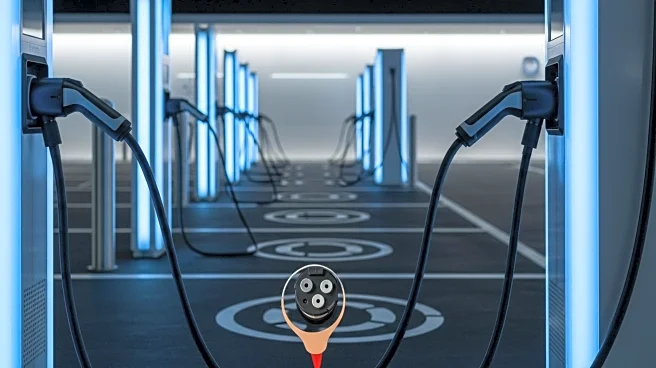What is the story about?
What's Happening?
In the second quarter of 2025, U.S. electric car sales experienced a 6% decline compared to the previous year, primarily driven by a decrease in Tesla sales. Despite this drop, overall sales in Q2 2025 were still significantly higher than in previous years, with a 60% increase from Q2 2022 and a 163% increase from Q2 2021. Non-Tesla electric vehicle sales remained relatively stable, showing only a slight increase of 218 units compared to Q2 2024. The decline in Tesla's sales has been a notable factor in the overall market trend, as non-Tesla EV sales have continued to grow over the years.
Why It's Important?
The decline in electric vehicle sales, particularly from Tesla, highlights potential challenges in the EV market, which has been a key area of growth in the U.S. automotive industry. Tesla's reduced sales could impact its market dominance and influence the strategies of other automakers. The overall growth trend in non-Tesla EV sales suggests a diversification in consumer preferences and increased competition in the market. This shift could lead to changes in manufacturing, marketing, and investment strategies within the industry, affecting stakeholders such as manufacturers, suppliers, and consumers.
What's Next?
The future of U.S. electric vehicle sales will likely depend on how Tesla and other automakers respond to these market changes. Companies may need to innovate and adapt their strategies to maintain growth and address consumer demands. Potential reactions from industry leaders could include increased investment in new technologies, expansion of product lines, and enhanced marketing efforts to attract a broader customer base. Monitoring these developments will be crucial for understanding the trajectory of the EV market in the coming years.
Beyond the Headlines
The decline in Tesla's sales may also reflect broader economic or societal factors, such as shifts in consumer priorities or changes in regulatory policies. The EV market's evolution could have implications for environmental goals, as electric vehicles are a critical component of efforts to reduce carbon emissions. Additionally, the competitive landscape may drive advancements in technology and infrastructure, influencing long-term industry trends and consumer behavior.
AI Generated Content
Do you find this article useful?

